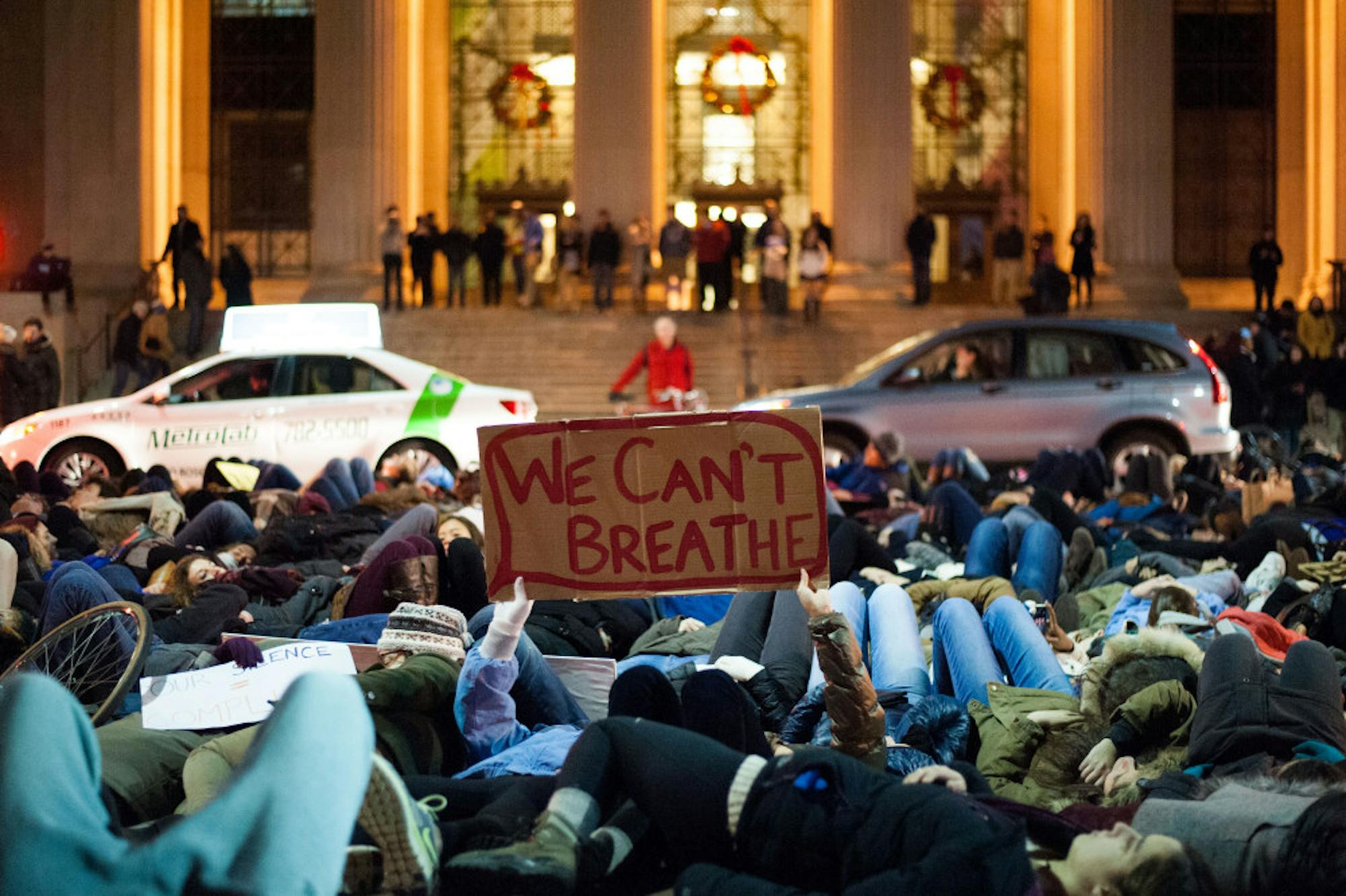Tufts students led a march that shut down major thoroughfares throughout Somerville and Cambridge on Friday evening as a part of the national #IndictAmerica movement.
Reacting to the recent non-indictments of white police officers in the killings of black victims Michael Brown and Eric Garner, over 600 protesters lay down in front of five Red Line stops to stage a die-in, according to the Boston Globe. At each stop, participants laid down for four-and-a-half minutes to represent the four-and-a-half hours that Brown’s body was left in the street after he was shot in Ferguson, Mo. this past August. The protest lasted for over three hours, moving nearly five miles from the Mayer Campus Center to theHarvard Bridge over the Charles River.
Event organizers emphasized the need for this sort of peaceful protest in order to take student activism beyond flyering and posting on social media.
“Staying on the Tufts campus is not enough,” Amber Rose Johnson, a senior who led the march, said. “We need other people to see that Tufts is a place that cares about this.”
Johnson compelled students to go beyond recognizing that black lives matter and to move toward addressing their own roles in perpetuating anti-black violence. In a call-and-response, those gathered chanted, “Tufts is not silent. I am complicit. This is my issue.”
Students held signs, some of which were made to resemble human corpses, as they marched. Some students passed out cupcakes and sandwiches to fellow protestors as the crowd announced, “What do we want? Justice! When do we want it? Now! If we don’t get it, shut it down!”
The students were joined along the way by Somerville and Cambridge residents, some with their children. A driver whose car was caught in the middle of the Davis Square die-in put on his hazard lights and lay down with the crowd.
Students from other universities also traveled to join the march.
“At Wellesley it’s been pretty silent,” Julie Chen, who attended along with several other Wellesley College students, explained.
While some people stuck in their cars due to the die-ins approached the protesters angrily, the majority showed support for the movement. Onlookers applauded several of the die-ins.
Jean, a taxi driver whose cab became stuck during the Harvard Square protest, said he welcomed the inconvenience because he supported the movement.
“Even though I’m working here, I don’t mind,” he said. “You cannot judge.”
Jean was one of hundreds of observers who rushed to snap photos and shoot video of the protesters. Johnson reminded marchers, however, that the protest was meant as more than a cool photo opportunity.
“This is not a march that we’re doing so you can take a picture,” she said. “This is a march that we’re doing because black people are dying.”
The chorus of chants was accompanied by the hum of police motorcycles, which escorted the marchers down Massachusetts Ave. As many as four police helicopters at a time buzzed overhead.
While there was no violent confrontation between police and protesters, the two dozen Cambridge and state police officers who lined up to hold the protest in front of the Harvard Bridge were met with shouts of “Hey hey, ho ho. These racist cops have got to go!”
After several minutes in which white participants pushed to the front of the crowd in case the officers decided to put their batons and zip-tie restraints to use, the protesters were allowed to pass onto the bridge. There they formed a circle for one last long moment of silence, after which they called out the names of some of the hundreds of black men who have been killed by police officers.
Before they dispersed, Johnson reminded the protestors that it would take much more than one march to end these systemic problems.
“Recognize that your work is not over because you’re leaving a protest,” she said. “This is not just a black problem, this is your problem.”
Tufts students lead #IndictAmerica protest

First-year Josh Ferry joined protesters as they laid down for four minutes and 30 seconds on Dec. 5 in Harvard Square to represent the four hours and 30 minutes Michael Brown's body was left on the street.





